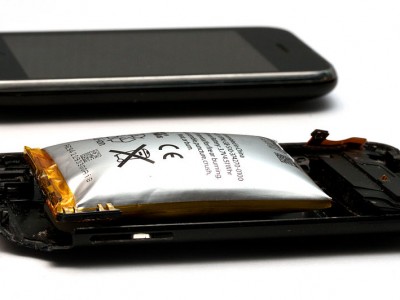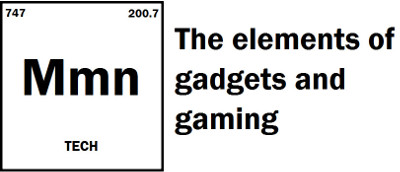

The rise and slow death of mobile gaming
Mobile gaming has been dying a long and slow death for a few years now. Which is certainly a provocative statement. After all, the market for smartphone games absolutely dwarfs that of conventional PCs and consoles. At least in terms of gross revenue year over year.
If money’s all you care about, then the industry is thriving like never before. However, there are more ways to die than of the body, or of the wallet.
Dumpster Brand Dumpsters are top of the line…
There was a time when it seemed like smartphones would end up replacing dedicated handhelds as the portable format of choice. Much like they did with other single purpose gadgets. Yet that hasn’t happened. A decade after those predictions were made, the Nintendo Switch is flying off the shelves, while mobile gaming faces nothing but scorn from the gaming community. Things weren’t always the dumpster fire we have now.
I was playing Monument Valley recently, and it reminded me of what mobile games used to be like. Back when small but talented developers were bristling with creativity and unbridled passion towards this new medium. There was a brief, bright period in history where it seemed like only the sky was the limit.

The hopeful dawn of a new gaming medium
In 2008, Apple introduced the iPhone 3G. It was just a slimmed down version of the original iPhone, with a faster modem in it. There was nothing particularly special about it, at least from a hardware standpoint. The one big change it did make though was the App Store. This marked a watershed moment for smartphones. Sure, the iPhone wasn’t the first to offer additional applications beyond what the firmware shipped with. However, it was the first one that really made finding, buying, and selling them simple as pie. It was at this moment when smartphones started to transition from glorified digital day planners into something more like a general purpose computer. It also blew the doors wide open for a whole host of potential uses for the new medium, especially games.
Of course most those early games were fairly simple. Devices that rely almost entirely on touch input just aren’t that conducive to gaming. Nintendo may have pioneered the concept, but even they were smart enough to use a stylus for precise control. There’s only so many ways you can tap and swipe your finger, and the lack of haptic feedback did no favours either. While the iPhone did get the prerequisite ports of Doom and Wolfenstein 3D, those games were never a joy to play. The controls were far too clunky and unresponsive for fast paced shooters.
What the iPhone did excel at were things like puzzle games, real-time strategy, isometric cRPGs, city builders, and graphical adventures. The sorts of point-and-click games that were usually played at home on PCs with a mouse.
During this period, you had a lot of experimentation being done by both indie devs and AAA studios, trying to figure out how to make this interface work. The results ranged from mediocre to downright works of art. I touched on the Hector trilogy not too long ago, which was originally an iOS exclusive. We also received excellent ports of Wiiware puzzler World of Goo, and legendary LucasArts adventures like Monkey Island. All of which were just top notch games oozing with charm and creativity.
Though perhaps one game from those early days sticks out more than the others. One that had you flicking a bunch of ornery birds at some rather cheeky piggies.
Angry Birds was a real tour-de-force at the dawn of smartphone gaming. Its simple yet addictive physics-based gameplay positioned it as the first real smash hit for the fledgling market. It seemed like everybody and their mothers were playing it. Of course, it helped that the game was released for free for Android devices. Ensuring that it got into as many peoples’ hands with as little effort as possible. While we couldn’t have known it at the time, it set the standard for how the mobile market was to work going forward.
You see, the other problem with mobile games was the pricing. iPhone users had gotten used to paying just a dollar per songs on iTunes, so they figured that apps should be priced accordingly. Back when Square Enix tried to charge nearly $20 for its 3D remakes of the original Final Fantasy titles, people scoffed. There’s no way they could justify that for a smartphone game! There was this expectation that phone games should be cheap.
The cracks start to form from small, almost minute, transactions
Game development is an expensive endeavor. When the public will only pay a maximum of $5 per app, that sort of hamstrings what you can do while still breaking even. Meanwhile, Apple was now pushing the technology to the cutting edge with their iPhone 4.
One title demoed was Infinity Blade, a Souls-like action game running on the Unreal Engine. It was decent enough, and certainly looked a lot better than anything the PSP and DS were capable of at the time. But like many of its mobile contemporaries, Infinity Blade suffered from limited controls. Most of the game was on-rails, resulting in a rather repetitive experience that quickly wore out its welcome.
One of Infinity Blade’s more curious mechanics, though, was its in-game economy. Like many action-adventure titles, it had light RPG elements that allowed players to purchase upgraded equipment for their character. However, aside from having to earn it from battle, the in-game currency could also be purchased with real money. This is perhaps one of the earlier mobile examples of what games industry commentator Jim Stirling calls the “fee-to-pay” system. Games that cost money to buy up front, but have additional “in-app purchases” on top of that. At least it’s one of the earliest notable titles to feature it.
Producing a 3D game like Infinity Blade is expensive. It’s one of the reasons why so few such titles were released for the PS Vita, even at $20-$30. So if the initial app price had to be low, the difference could be made up through these extra purchases. Now, these purchases were entirely optional. The game could be completed from start to finish without having to spend another dime. However, the concept proved more popular than anyone expected.
Eventually, developers and publishers realized that these “microtransactions” could make them far more money than the initial purchase. Facebook at the time was making a ton off games that were free up front, so it was quickly decided that this was the route going forward for mobile as well.
This is the exact moment where things started to fall apart.

Gambler’s Paradise
2011 would mark the paradigm shift in mobile gaming business model, when Capcom released Smurfs’ Village. The game was a free tie in to the feature film came out that same year. Like most licensed movie games, it wasn’t anything spectacular. In reality, it was little more than a clone of Facebook’s Farmville, but it proved popular none the less.
The game featured a mechanic that allowed players to purchase Smurf Berries, which were used as a form of in-game currency. The berries were needed to buy items and charge up stats, and like Infinity Blade, could be purchased with real money.
The thing is, Smurfs’ Village was targeted at young children. The sort of audience that doesn’t quite understand the concept of how money works. Parents, who had failed to put sufficient parental controls on iTunes and Google Play accounts, were shocked when they discovered the massive bills their kids had be racking up. Upwards of thousands of dollars in some cases. This prompted strong backlash from parents, who accused the game of exploiting children. Which, let’s be honest, it kind of was. Apple eventually offered refunds for the bigger spenders. But the problem would only get worse, as the industry began devising more insidious monetization methods.
Another popular game, Tiny Tower, also introduced in 2011, would popularize the timing mechanic. It forced players to wait long stretches of real-time before in-game events occurred. Which, you guessed it, could be reduced through real-world money. In their review of the game, Edge noted that “Tiny Tower isn’t defined by microtransactions: there’s nothing that can’t be done, given enough time, [however,] forking out for a single 100 Bux bundle makes the first stretch so much more pleasant… it’s hard to resist.”
Let me repeat that. “Forking out for a single 100 Bux bundle makes the first stretch so much more pleasant… it’s hard to resist.“
This one throwaway line from a review of a throwaway game proved to be prophecy for the future of mobile gaming.
The following year, games based on the “freemium” model began to eclipse paid apps. This is when we saw the release of the unholy trinity: Candy Crush Saga, Simpsons: Tapped Out, and Clash of Clans. All three games built on mechanics set forth by games like Smurfs’ Village and Tiny Tower, to create virtual Skinner Boxes to entice players into spending their hard earned money.
If you’re not familiar with the concept of the Skinner Box, it was an experiment conducted by American psychologist BF Skinner in the 1920’s to study mental conditioning on rodents. Rats were placed in a box and trained to repeat a simple task when given a specific queue. If they got it right, they got a treat. If they messed up, the floor was electrified. Over time, the rats would perform the task on queue without even receiving the reward or punishment, as their brains were conditioned to associate these actions with a good or bad outcome.
The casino industry had known about this long before Skinner began playing god with the local vermin population. Slot machines have always featured bright flashing lights and bells, coupled with simple and repetitive mechanics. Slots alone can bring in so much money, that most casinos dedicate the majority of their floor space to them. Most table games require a certain level of skill and strategy. Pulling a lever does not, and to the rat part of your brain, the potential rewards of doing so make it hard to resist.
It wasn’t long before mobile developers caught on and started working similar mechanics into their games. Rewarding players who purchase microtransactions, while punishing those who did not. Eventually conditioning people, the so called “whales” to just open up their wallets for the instant gratification of that sweet “pay-to-win” experience.

Flush with cash, but creatively bankrupt
All this has created a perfect storm that has not only served to nail mobile players into a box, but developers as well.
The expectation went from games costing no more than $5, to games having to be free. If games have to be free, that means that developers have to recoup their costs either through either advertising or microtransactions. And if they want to actually make a profit off their game, they have to focus on finding ways to turn their “players into payers”, as one particularly scummy marketing firm put it.
This means that mobile developers are very limited in the kinds of games they can create. Looking at the top games on the top games on the Play Store, most of them are mindless clickers. All with cheap looking art styles and the same tired old mechanics designed to push as many microtransaction sales as possible. Many are just shameless knockoffs of better games on better platforms.
That’s not to say titles like your Hectors and Worlds of Goo don’t exist anymore. There have been solid ports of Stardew Valley and Grand Theft Auto III, to more recent creative indie titles Dead Cells and the aforementioned Monument Valley. None of which have additional purchases on top of the initial price. But these games feel like curios these days, when they were more the norm just a decade ago.

So you sold your soul to the devil, now what?
There’s just no interest, or money, in high quality mobile games where you pay once and play. Which is why so many talented developers have flocked back to traditional platforms, where their products stand out rather than being buried in a sea of trash. The rest sold their soul out to the devil chasing whales and that all mighty microtransaction. Producing games that aren’t even designed to be fun anymore. They’re just glorified Skinner Boxes and slot machines. Hell, it’s even filtered into console games. NBA 2K20 actually has a literal slot machine in it.
So, is there anything that can be done to redeem mobile gaming? Well, I’d like to be the optimist, but t I think things have gone too far down the rabbit hole at this point. I could tell you to go out and support the good mobile games. The ones that actually are creative and don’t try to shake you down for more money at every opportunity. Which, you know, isn’t a bad idea. However, I don’t think it’s likely to have much of an impact.
Even big companies like Apple and Google tried to spotlight “premium” games, many years ago, but largely gave up. It barely made a dent in the tide of freemium products. The truth is that people actually really, really like the microtransaction model. And maybe smartphones are just ideally suited for these types of games, and only these types of games. After all, nothing else seemed to work well.
While it continues to bring in ever growing boat loads of cash for publishers, there’s very little in terms of entertainment or creativity to be found on the platform. I think it’s fair to say that mobile gaming is, effectively, dead.
Cover photo by Håkan Dahlström via Wikicommons. Article photos property of 20th Century Fox, used under fair use for illustrative purposes.


